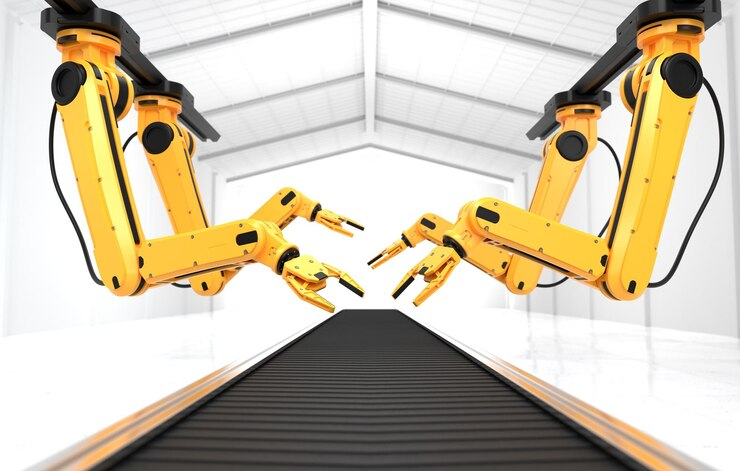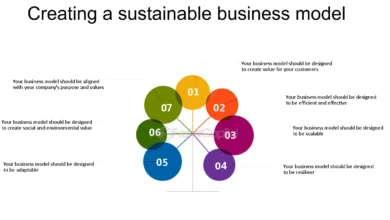Are you aware that belt conveyors move more than 70% of all bulk materials worldwide? These simple machines quietly benefit numerous sectors, such as mining, farming, manufacturing, and construction. However, by 2024, these modest belt conveyors are experiencing a drastic change powered by artificial intelligence (AI).
AI is changing many industries, and conveyors are no exception. This piece examines how AI, combined with Internet of Things (IoT) technology and new design ideas, revolutionizes the conveyor sector. Thus, it makes these systems wiser, faster, and friendlier to our planet.
1. IoT Connectivity for Enhanced Monitoring
Bringing the Internet of Things (IoT) into play is a significant leap for the conveyor industry. Real-time tracking and analysis of data become possible with IoT-linked conveyor systems. This allows for maintenance ahead of time, quick identification of emerging pitfalls, and efficient use of energy.
By applying IoT, companies can foresee decreased expenses in operations and a boost in productivity. It is all thanks to their being active and making decisions based on data. IoT sensors installed at critical junctures along the belt conveyors record different parameters like alignment, tension, speed, temperature, and pressure.
This data is then fed to routers, real-time information systems, and user interfaces for visibility and analysis. IoT-based predictive maintenance provides valuable insights that help businesses identify unusual patterns, triggering notifications to the maintenance team. Technicians can take proactive measures and repair faults before they lead to a total system collapse.
In addition, machine learning algorithms using IoT review past data and patterns. They highlight elements that could cause problems, like belts not tracking correctly. This tool allows tech experts to foresee possible issues and come up with solutions beforehand.
2. Modular and Flexible Conveyor Designs
Traditional belt conveyor systems usually require more adaptability, leading to difficulties when production methods change. The new wave in conveyor layout emphasizes ease of change and adaptability. Producers create conveyor systems that can be conveniently rearranged to match changing needs.
This flexibility guarantees that firms can remain agile to shifts in the market and manufacturing needs. Conveyor systems structured in a modular style with the utilization of t-slot aluminum extrusions afford the advantage of simple alterations over time.
The market for modular conveyor systems is expanding quickly. It’s expected to reach a whopping USD 15,183.1 million value by 2030, growing at a rate of 5.1%. These advanced tools for handling materials are made up of sections or parts.
These can be joined smoothly and set up to meet work needs. The design of these conveyor systems is modular, meaning businesses can make layouts that suit them. They can change easily to new needs and swiftly grow or rearrange their production lines.
T-slot aluminum extrusions are a type of modular conveyor system. They offer a host of advantages, such as better flexibility, scalability, minimized downtime, enhanced productivity, and more efficient operations.
The adaptive structure of these conveyor systems allows for seamless growth and alteration, suiting evolving requirements. Consider extension with added sections to meet higher production necessities or rearranging the layout for the best use of space.
3. Sustainability-Focused Conveyor Systems
With the increasing awareness of our environment, the belt conveyor field is changing to be more earth friendly. Makers are looking into materials and plans that lessen power use and trash.
Moreover, they encourage the creation of conveyor structures that can be easily reused.
Conveyors that put the environment first match the aims of corporate social responsibility. They catch the interest of companies wanting to lower their effect on the earth.
A crucial part of creating green conveyor designs revolves around utilizing power-saving parts and methods. Take, for instance, integrating recuperative braking mechanisms into conveyor bands.
It can snatch back and recycle the energy made when slowing down, thus cutting the total energy usage by as much as 30%. Moreover, applying LED lights in conveyor setups can result in substantial energy preservation in contrast to regular lighting picks.
4. Autonomous and Collaborative Robotic Integration
Automation is changing the way we view belt conveyor systems. They’re becoming more than just transport tools. When we merge these systems with self-governing and collaborative robots, they can do more. They can sort items, pick things up, and pack them.
Doing this makes the system work better, lowers the cost of human labor, and creates new chances for industries that need detailed and exact handling of goods. We can make these conveyor systems to match the specific needs of robotic aids, like having areas lit from the back, exact lining up, and moving at the same time.
An instance of effective robot usage is seen in online shopping and delivery services. Self-directed moving robots (AMRs) can flawlessly connect conveyor machines for automated selection, arrangement, and boxing of orders.
These team-player robots assist humans, boosting efficiency and lessening the physical effort tied to repetitive duties. The conveyor devices can be fine-tuned for exact sequencing and coordinated action, guaranteeing smooth transitions between the robots and the goods management system.
Conclusion
The belt conveyor industry is close to a massive shift, pushed by fresh tech developments and sustainable initiatives. AI, Internet of Things connectivity, interchangeable layouts, preserving the environment, and robot inclusion are vital parts of conveyor mechanisms. Thus, firms gain from improved output, lesser running expenses, and an eco-friendlier way of moving materials. These shifts will put businesses on the leading edge, allowing them to expand and become more competitive.
Also Read: https://usatimenetwork.com/




